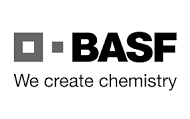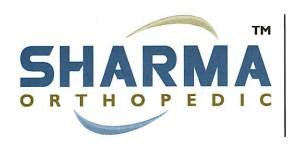5th August,2023
The Chief Manager, Business Intelligence & Analysis
Kenya Revenue Authority
Times Towers
Nairobi, Kenya
Dear Madam,
REF: Application for Advance Ruling for TASECTAN® PAED Sachets and TASECTAN® CAPSULES.
We are writing on behalf of our principal, Austell Pharmaceuticals (Pty) Ltd, to request for a HS classification, advance ruling, for 2 Products namely (1) TASECTAN® PAED 250 mg Sachets. (2) TASECTAN® 500 mg Capsules. The application is done ,as per section 248(A) of EACCMA. Our proposed HS Classification is 3004.50.00
The structure of the application consists of:
- Description of the functions of the products
- Extracts from the applicable legal notes, followed by our analysis, highlighted in red and enclosed in a text box. The most important Explanatory Notes are underlined.
The application for the two products has been put up in one document because the functions and the legal notes for both products are similar.
Description of TASECTAN® PAED 250 mg Sachets
Each sachet contains gelatin tannate 250 mg.
Uses of the TASECTAN® PAED 250 mg Sachets
TASECTAN® PAED consists of a gelatin and tannic acid complex. The compound is not altered in the stomach, does not enter the blood stream, and has a dual mechanism of action:
- By forming a film which protects the intestinal walls, thereby improving mucosal resistance to pro-inflammatory proteins.
- Promotes the elimination of pro-inflammatory proteins.
TASECTAN® PAED reduces the frequency and duration of diarrhoea episodes. TASECTAN® PAED is used for the safe treatment of diarrhoea in infants and children.
Description of TASECTAN® 500 mg Capsules
Each capsule contains gelatin tannate 500 mg.
The other ingredients are corn starch and magnesium stearate.
Uses of the TASECTAN® 500 mg Capsules
TASECTAN® consists of a gelatin and tannic acid complex. The compound is not altered in the stomach, does not enter the bloodstream, and has a dual mechanism of action:
- By forming a film which protects the intestinal walls, thereby improving mucosal resistance to pro-inflammatory proteins.
- Promotes the elimination of pro-inflammatory proteins.
Please refer to the Patient Information Leaflet and the Product Sample for more information
| The two products have been put up as medicaments for treatment of diarrhoea in infants, children and adults. |
Analysis of the Ingredients from Public Sources
Gelatin or gelatine is a translucent, colourless, flavourless food ingredient, commonly derived from collagen taken from animal body parts. It is brittle when dry and rubbery when moist. It may also be referred to as hydrolysed collagen, collagen hydrolysate, gelatine hydrolysate, hydrolysed gelatine, and collagen peptides after it has undergone hydrolysis. It is commonly used as a gelling agent in food, beverages, medications, drug or vitamin capsules, photographic films, papers, and cosmetics.
Tannic acid is a specific form of tannin, a type of polyphenol. Its weak acidity (pKa around 6) is due to the numerous phenol groups in the structure. The chemical formula for commercial tannic acid is often given as C76H52O46, which corresponds with decagalloyl glucose, but in fact it is a mixture of polygalloyl glucoses or polygalloyl quinic acid esters with the number of galloyl moieties per molecule ranging from 2 up to 12 depending on the plant source used to extract the tannic acid. Commercial tannic acid is usually extracted from any of the following plant parts: Tara pods (Caesalpinia spinosa), gallnuts from Rhus semialata or Quercus infectoria or Sicilian sumac leaves (Rhus coriaria).
In conjunction with magnesium and sometimes activated charcoal, tannic acid was once used as a treatment for many toxic substances, such as strychnine, mushroom, and ptomaine poisonings in the late 19th and early 20th centuries.
Gelatin tannate (GT) is a complex of tannic acid, which possesses astringent, antibacterial, and anti-inflammatory properties, and a protective gelatin. It is increasingly being marketed as an antidiarrheal drug.
Heading 32.01 Explanatory Notes
32.01 – Tanning extracts of vegetable origin; tannins and their salts, ethers, esters, and other derivatives.
3201.10 – Quebracho extract
3201.20 – Wattle extract
3201.90 – Other
(A) Tanning extracts of vegetable origin.
These are vegetable extracts used mainly for the tanning of hides or skins. They are generally prepared by extraction with warm water (sometimes acidulated) from the vegetable material (wood, barks, leaves, fruits, roots, etc.) previously ground or shredded. The liquid obtained is filtered or centrifuged and then concentrated and sometimes treated with sulphites, etc. The extracts thus obtained are liquid but may be further concentrated to paste or solid forms. All these extracts contain varying proportions of tannin as well as other substances such as sugar, mineral salts, organic acids, etc. They are generally brown, yellow, or reddish in colour.
The principal tanning extracts are those from oak, chestnut, quebracho, pines, wattle (mimosa), sumach, myrobalans, vallonia, gambier, mangrove or divi-divi.
Tannins (tannic acids) are the main active constituents of vegetable tanning materials. They are obtained by extraction with ether or alcohol from the raw vegetable materials of heading 14.04 or from the extracts covered by Part (A) above.
All these tannins are generally in the form of white or yellowish amorphous powders which turn brown on exposure to air. They may sometimes be in the form of scales or needle-like crystals, etc. They are used principally as mordants in dyeing, in the manufacture of inks, for the clarification of wines or beers, in pharmacy and photography.
| The explanatory notes to heading 32.01 clarify what tannic acids. They are extracts from vegetables. They are used in pharmacy. Derivatives of tannates are used in medicine. |
The tannates classified in this heading include those of aluminium, bismuth, calcium, iron, manganese, zinc, hexamethylenetetramine, phenazone or orexine. Other derivatives of tannins include acetyltannin and methyleneditannin. These derivatives are usually employed in medicine.
Chapter 30: Pharmaceutical products: Explanatory Notes
3.- For the purposes of headings 30.03 and 30.04 and of Note 4 (d) to this Chapter, the following are to be treated :
(a) As unmixed products :
(1) Unmixed products dissolved in water.
(2) All goods of Chapter 28 or 29; and
(3) Simple vegetable extracts of heading 13.02, merely standardised or dissolved in any solvent.
(b) As products which have been mixed :
(1) Colloidal solutions and suspensions (other than colloidal sulphur);
| Chapter 30 covers unmixed goods, the active components in the products are the tannic acid complex which is a plant extract. Therefore, considered as unmixed goods classifiable in chapter 30 when put up for therapeutic and prophylactic purpose. |
(2) Vegetable extracts obtained by the treatment of mixtures of vegetable materials; and
Heading 30.03 Explanatory Notes
30.03 – Medicaments (excluding goods of heading 30.02, 30.05 or 30.06) consisting of two or more constituents which have been mixed together for therapeutic or prophylactic uses, not put up in measured doses or in forms or packings for retail sale.
| Heading 30.03 covers medicinal preparations for use in the internal or external treatment or prevention of human or animal ailments. These preparations are obtained by mixing together two or more substances. The instant products are a mixture of two or more products as per the patient information leaflet. It is used for treatment of diarrhoea in infants, children, and adults. Heading 30.03 covers nonretail products, but similar to those of heading 30.04. The products functions are therefore completely described by heading 30.03/30.04. |
This heading covers medicinal preparations for use in the internal or external treatment or prevention of human or animal ailments. These preparations are obtained by mixing together two or more substances. However, if put up in measured doses or in forms or packings for retail sale, they fall in heading 30.04.
The heading includes :
(1) Mixed medicinal preparations such as those listed in an official pharmacopoeia, proprietary medicines, etc., including those in the form of gargles, eye drops, ointments, liniments, injections, counter-irritant and other preparations not falling in heading 30.02, 30.05 or 30.06.
(2) Preparations containing a single pharmaceutical substance together with an excipient, sweetening agent, agglomerating agent, support, etc.
On the other hand, the heading covers preparations in which the foodstuff or the beverage merely serves as a support, vehicle, sweetening agent or a processing or technical aid for the medicinal substances (e.g., in order to facilitate ingestion).
Heading 30.04 Explanatory Notes
30.04 – Medicaments (excluding goods of heading 30.02, 30.05 or 30.06) consisting of mixed or unmixed products for therapeutic or prophylactic uses, put up in measured doses (including those in the form of transdermal administration systems) or in forms or packings for retail sale.
3004.50 – Other, containing vitamins or other products of heading 29.36
3004.90 – Other
This heading covers medicaments consisting of mixed or unmixed products, provided they are :
(a) Put up in measured doses or in forms such as tablets, ampoules (for example, re-distilled water, in ampoules of 1.25 to 10 cm3, for use either for the direct treatment of certain diseases, e.g., alcoholism, diabetic coma or as a solvent for the preparation of injectable medicinal solutions), capsules, cachets, drops or pastilles, medicaments in the form of transdermal administration systems, or small quantities of powder, ready for taking as single doses for therapeutic or prophylactic use.
The heading also includes measured doses in the form of transdermal administration systems which are generally put up in the form of self-adhesive patches (usually rectangular or round) and which are applied directly to the skin of patients. The active substance is contained in a reservoir which is closed by a porous membrane on the side entering into contact with the skin. The active substance released from the reservoir is absorbed by passive molecular diffusion through the skin and passes directly into the bloodstream. These systems should not be confused with medical adhesive plasters of heading 30.05.
The heading applies to such single doses whether in bulk, in packings for retail sale, etc.; or
(b) In packings for retail sale for therapeutic or prophylactic use. This refers to products (for example, sodium bicarbonate and tamarind powder) which, because of their packing and, in particular, the presence of appropriate indications (statement of disease or condition for which they are to be used, method of use or application, statement of dose, etc.) are clearly intended for sale directly to users (private persons, hospitals, etc.) without repacking, for the above purposes.
These indications (in any language) may be given by label, literature or otherwise. However, the mere indication of pharmaceutical or other degree of purity is not alone sufficient to justify classification in this heading.
On the other hand, even if no indications are given, unmixed products are to be regarded as being put up for retail sale for therapeutic or prophylactic use if they are put up in a form clearly specialised for such use.
Medicaments consisting of mixed products for therapeutic or prophylactic uses and not put up in measured doses or in forms or packings for retail sale are classified in heading 30.03 (see the corresponding Explanatory Note).
| The products satisfy conditions a and b of heading 30.04 explanatory notes extracted above, in the context of: measured doses, for direct treatment of certain diseases, in packings for retail sale for therapeutic use, presence of appropriate indications. Refer to the patient information leaflet as well as samples of the products. |
Under the terms of Chapter Note 3, the following are also regarded as unmixed products :
(1) Unmixed products dissolved in water.
| Heading 30.04 covers unmixed goods, the active components in the products are tannic acid complex. They are therefore considered as unmixed goods classifiable in heading 30.04, when put up for therapeutic and prophylactic purpose. |
(2) All goods of Chapter 28 or 29. Such products include colloidal sulphur and stabilised solutions of hydrogen peroxide.
On the other hand, the heading covers preparations in which the foodstuff or the beverage merely serves as a
support, vehicle, sweetening agent or a processing or technical aid for the medicinal substances (e.g., in order
| The Explanatory note above clarifies that the other inactive ingredients/excipients are allowable as part of therapeutic or prophylactic preparations and do not alter classification in heading 30.04 as long as they do not impart the essential character to the product. |
to facilitate ingestion).
Section VI: PRODUCTS OF THE CHEMICAL OR ALLIED INDUSTRIES: Explanatory Notes
2.- Subject to Note 1 above, goods classifiable in heading 30.04, 30.05, 30.06, 32.12, 33.03, 33.04, 33.05, 33.06, 33.07, 35.06, 37.07 or 38.08 by reason of being put up in measured doses or for retail sale are to be classified in those headings and in no other heading of the Nomenclature.
Note 2. Explanatory Notes
| The section VI note extracted above rules out classification in any other heading of the nomenclature if a product is put up for therapeutic or prophylactic application(heading 30.04) and is put up in measured doses. Note the reasons: put up in measured doses The instant product is put up in measured doses can be confirmed from the sample provided to KRA. It is correctly classifiable in heading 30.04, therefore the product cannot be classified in any other heading in the nomenclature. |
Section Note 2 provides that goods (other than those described in heading 28.43 to 28.46 or 28.52) which are covered by heading 30.04, 30.05, 30.06, 32.12, 33.03, 33.04, 33.05, 33.06, 33.07, 35.06, 37.07 or 38.08 by reason of being put up in measured doses or for retail sale, are to be classified in those headings notwithstanding that they could also fall in some other heading of the Nomenclature. For example, sulphur put up for retail sale for therapeutic purposes is classified in heading 30.04 and not in heading 25.03 or 28.02, and dextrin put up for retail sale as a glue is classified in heading 35.06 and not in heading 35.05.
World Customs Organisation(WCO) Ruling for Subheading 3004.9
- Medicament in the form of pills, consisting of plant extracts (of valerian root and hop cones), maltodextrin, colourings, and excipients. According to the label, the product is recommended to be used as a remedy against agitation (two to four pills daily) or sleep disorders (one pill daily). The product contains a sufficient quantity of active ingredients to provide curative or prophylactic effect against disorders such as insomnia or sleeplessness. It is put up for retail sale in packages of, e.g., 60 pills.
Application of GIRs 1 and 6.
| The WCO ruling extracted above supports our assertion that plant extracts put up for therapeutic or prophylactic purpose are to be classified under subheading 3004.90. |
Adoption : 2012
| The products therapeutic attributes described above and in the patient information leaflet is evidence-based with proven clinical studies on the safety, efficacy, and unique mode of action. The clinical trials are available upon request.
All products imported into Kenya will be detailed to HCP (Healthcare Professionals), and will be prescription driven, stock will only be supplied to pharmacies, hospitals and others as approved by the Poisons and Pharmacy Board. Professional medical sales representatives will be trained on the products. The supply model described above is used for all allopathic medicine. |
We hereby enclose copies of the following documents for your reference.
- Patient Information Leaflet for TASECTAN® PAED 250 mg Sachets and TASECTAN® 500 mg Capsules
- Sample of TASECTAN® PAED 250 mg Sachets
- Sample of TASECTAN® 500 mg Capsules
| From our assessment, the two TASECTAN® PAED 250 mg Sachets (2) TASECTAN® 500 mg Capsules, should be classified under heading 30.04 which covers {Medicaments (excluding goods of heading 30.02, 30.05 or 30.06) consisting of mixed or unmixed products for therapeutic or prophylactic uses, put up in measured doses (including those in the form of transdermal administration systems) or in forms or packings for retail sale. The specific subheading will be 3004.90.00 |
Our Technical experts will be readily available for any clarification required.
In light of the above, we kindly request you to guide us on the suitable tariff classification for above-mentioned product.
Thanking you for your valued consideration.
Yours faithfully,
Charles Mukangu
Janron Consult
Email: mmc@janronconsult.com
Phone: +254708751955








